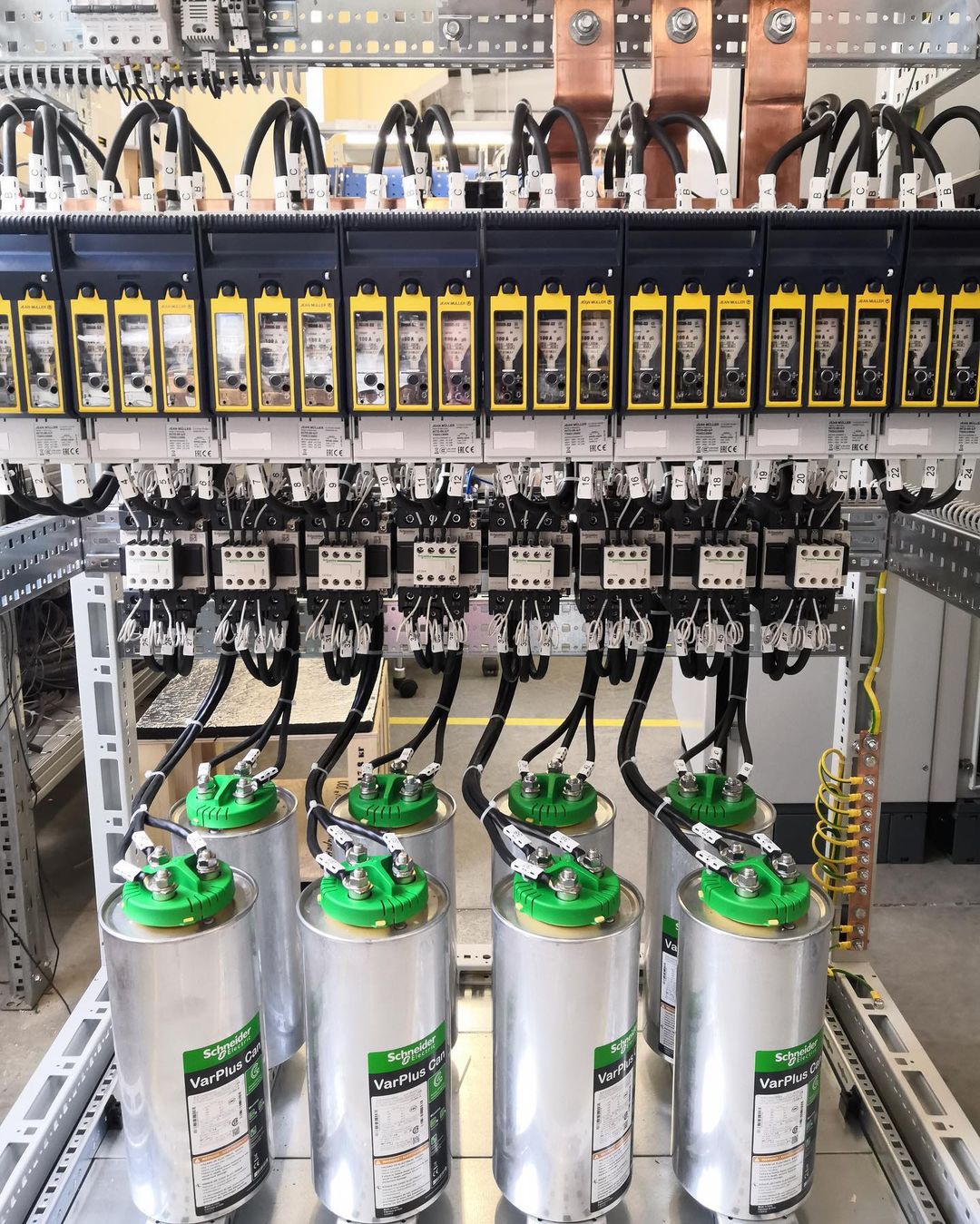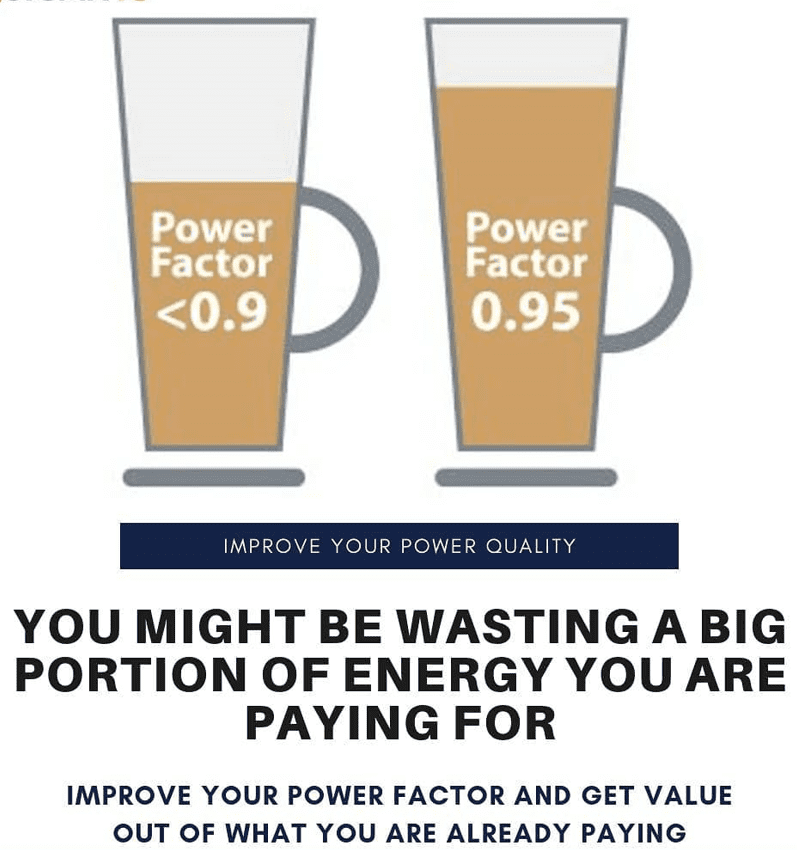POWER FACTOR SURCHARGE

Power factor surcharge is applied by KPLC when monthly average power factor value is below 0.9. Power factor refers to the ability of an electrical equipment to convert electrical current into useful work such as heat, light, mechanical motion…etc. To use electrical power efficiently systems should draw mostly real power, measured in kilowatts (kW), from the grid. If an equipment draws too much reactive power, measured in kilovolt-amperes-reactive (kVAR), it can’t perform work as efficiently and limits the capacity of power lines to deliver real power and quality voltage to customers.
The total power a facility draws, also known apparent power, is the square root of the sum of the squares of real and reactive powers. The ratio of real power (kW) to total power (kVA) is called power factor (pf), and the equipment is performing best when that ratio is between 90% and 100% (0.9 to 1)
To calculate power factor we use the following formula:
Power factor (pf) = Real power consumption (kW) / Apparent Power Consumption (kVA)

Stop KPLC Penalties
Send us three (3) monthly consecutive Kenya Power bills on email admin@seamless-automation.com and we will offer you technical advise freely. We design, assemble, test and commissiong power factor correction unit in wall-mounting or free-standing structures depending on the ratings.
Impact of low power factor on electrical systems
- Voltage fluctuations
- Limits the capacity of power lines
Why do you pay for power factor surcharge?
When your power factor is below unity 1 (100%), your facility is drawing both reactive power and real power. However, the energy charges (cents per KWh) applied to your account only reflects the cost of providing you with real power you have consumed.
A power factor surcharge is applied to your account when your power factor is below 90%. It is used to recover the cost of supplying reactive power to you, which isn’t included in other charges. Ideally, real power should be equal to apparent power.
Causes of poor power factor
Large inductive loads such as power transformers and electric motor driven loads such as fans, pumps and air compressors causes poor power factor. Additionally, loads that draw current in a non-linear fashion, such as computers, broadcasting equipment, compact fluorescent and LED lighting, electrical chargers, induction furnaces and many other devices may also contribute to low power factor in a customer’s system.
Good places to start your investigation are:
- Large fans and motors
- Equipment with a high number of transformers (such as lighting ballasts)
- Failed or improperly sized capacitors (if there is existing power factor correction unit)
- Harmonics in a system caused by non-linear electrical loads
How to correct your power factor
Depending on the cause of your low power factor, there are different solutions that may be appropriate. Some examples are:
- Capacitors are commonly installed in electrical system where the cause of the poor power factor is a linear inductive load, such as an electric motor . Capacitors produce a leading power factor to counteract the lagging power factor of inductive loads.
- Harmonics filters may be needed in your system to improve power factor if the cause is a non-linear load.
- Sometimes operational changes in a facility are all that are needed to improve power factor. For example, you can operate a motor closer to the full-load rating.
The benefits of correcting your power factor
Improving on a low power factor may help you:
- Reduce electricity bills by eliminating power factor surcharges.
- Enhance equipment operation by improving voltage.
- Improve energy efficiency of your electrical system by reducing line losses.
- Eliminate or reduce transformer maintenance or upgrades.












